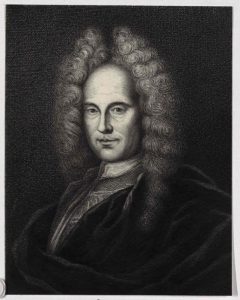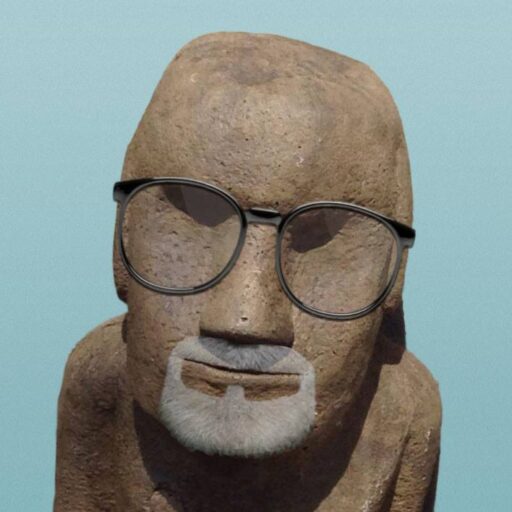Here’s a big batch of classical music recommendations, mostly Baroque.

Bach, Johann Sebastian, BWV 232. Mass in B Minor. Emotional, precise, grand.
Bach, J. S., Brandenburg Concertos, Masaaki Suzuki, harpsichord and direction, Bach Collegium Japan.
- BWV 1046.
- BWV 1047 has familiar melodies, seems more intricate than 1046 and more changes in mood.
- BWV 1048.
- BWV 1049 – Much more subdued than 1048. Notes on 1049. The third and final Presto has passages with an unusual combination of speed and sorrow – fascinating.
- BWV 1050 – Another very familiar melody in I. Allegro. Parts of the harpsichord passages toward the end are about as fast as I’ve heard from Bach, brushing up against the border of out of control – fun and engaging.
- BMW 1051 – Not as intricate as the others, apparently the earliest written.
Bach, J. S., BWV 1069. Overture No. 4 in D Major. First movement very jaunty, 12+ minutes of fun, with an occasional transition to a beautiful, minor key melody. Outstanding. More info: https://bach.org/education/bwv-1069/
Bach, J.S. BWV 1052. Harpsichord Concerto in D Minor. First movement, Allegro, is incredible. The other two movements are not far behind.
Bach, J.S. BWV 184. Cantata. Composed for Pentecost. Translation here.
Bach, J.S. BWV 194. Cantata. It’s so much harder to believe in God now, with church music that sounds like mush.
Beethoven. Op. 27. Sonata No. 14 in C-sharp Minor. Composed in 1798. First movement recognizable, haunting. Solid from start to finish.
Bomtempo, Joao Domingos. Op. 23. Requiem Mass. Composed in 1819. More information here.
Bomtempo, Symphony No. 2. No Op. number I can find. Somewhat reminiscent of Beethoven, only softer, less rage.
Bononcini, Giovanni Battista. La nemica d’Amore fatta amante (The Enemy of Love). Opera. Kicks off with a minor key and slow tempo, but very haunting. A great sound, kind of like Monteverdi meets Handel. Elegant, understated, slow in tempo generally. Some of the melodies are so tender they bring a tear to the eye. Virtually no chorus. http://www.operatoday.com/content/2005/08/bononcini_la_ne.php.
Bononcini, GIovanni Battista. Polifermo. A pastoral play, a singspiel sorta. In German. Incredibly tuneful and impassioned, despite the harshness of the German. http://www.musica-dei-donum.org/concert_reviews/Utrecht_02-12-04.htm.
Cherubini, Requiem in C Minor (Toscanini). Toscanini coaxes the maximum beauty out of every note of this exquisite Requiem. Dramatic, devout. Beethoven-like. Berlioz said the decrescendo in the Agnus Dei was the best of its kind ever written — haunting and unforgettable.
Cherubini, Gli Abencerragi. A real hidden gem; it seems there are only a handful of recordings of this magnificent, haunting opera. Excellent chorus passages. Even the recitatives are unusually moving and dynamic.
Corelli, Arcangelo (1653-1713), Op. 6, Conerti grossi. Published in 1714. Beautiful violin and ensemble chamber music. Quintessentially Baroque.
Fux, Johann Joseph (1660-1741). Overture in D Major. Nary a wasted note. Powerful. times sounds like Lully and at other times like Handel.
Gluck, Christoph Willibald (1714-1787), Wq. 30. Orfeo Ed Euridice, Libretto by Raniero de Calzabigi. (Karl Richter conducting, 1968 recording.) Less singing than usual for an opera. Has the definite feel of Mozart.
Gluck, Wq. 46. Iphigenie et Tauride, Glorious from start to finish. Currently my favorite opera.
Gossec, Francois-Joseph (1734-1829) Grande Messe Des Morts. Dramatic, melodic, powerful, passionate. Gossec was a prolific opera composer. Innovative for its time in the depth and diversity of orchestration. His Mass influenced Mozart, and I think it does sound a lot like Mozart. Movement 13, Confutatis: Allegro Molto, is insanely good, the allegro to top all allegros.
Handel, HWV 17. Giulio Cesare. Probably Handel’s most famous opera today. Libretto in English. Profoundly dramatic and beautiful music. Though predominantly sad, gloomy, it is a 3.5-hour opera I was sorry to see end.
Handel, HWV 19. Rodelinda. First performed in 1725. Coloratura abounds! One rousing aria after another. Very melodic, with expressive vocals beyond the norm for Handel. The most musically intricate and embellished of all the Handel operas I’ve listened to so far.
Handel, HWV 33. Ariodante. First performed in 1735. Kind of a blend of Lully and Amade. Libretto is here. Controlled, Baroque style, and yet an amazing emotional range, from deeply sorrowful, to joyful, to lighthearted.
Handel, HWV 36. Arminio. First performed in 1737. Acts 1 and 2 are excellent. Melodic hooks are terrific, almost on par with Julius Caesar or Xerxes. Act 2, Vadi, vado a morir stands out, as does Rendimi il dolce sposo.
Handel, HWV 35. Atalanta. A++. Composed in 1736. Every aria is absolutely beautiful, and the recitatives are much better than average. This opera was very popular in its time, and it’s not hard to see why – tuneful, dramatic, impassioned, stately – all the elements that make Handel Handel. As is so often the case with Handel, the longer arias (5-8 minutes roughly) are the best arias.
Handel, HWV 46a. Il Trionfo Del Tempo. Oratorio. Handel’s first oratorio is brilliant. And this was also the last oratorio he ever worked on.
Handel, HWV 54. Israel in Egypt. Premiered in 1739 in London. This recording is arranged by Mendelssohn and you can tell. Glorious. Background here.
Handel, HWV 40. Xerxes. Acts 1 and 2 are much better than Act 3. A late opera, written in 1733-38. The prelude and first aria are fabulous. The whole Act 1 is phenomenal. Stronger than the first act of Julius Caesar. Act 2 is great, too: Handel was ON FIRE with this one. The second act is maybe even better than the first, if that’s possible. The continual back-and-forth between tender, slow arias and exciting, fast-paced passages, sometimes within the same aria, are an emotional rollercoaster, yet controlled at all times. Terrific singing in this recording.
Handel, Sarabande. A collection of gems from various concertos for violin, organ and oboe. I used to wonder how there could be a Handel Society. Now I wonder how there could not be one.
Handel, HWV 75, Alexander’s Feast. A hidden gem. Perhaps my favorite oratorio/opera in English. Beautiful from start to finish – melodic, dramatic, interesting melodies and rhythms.
Handel, HWV 122. Apollo e Dafne. Oscillates between jubilant and sorrowful. Powerful throughout, with great intensity. Composed in 1709-1710. The overture has been lost. Some of the melodic strains sound like highlights of his operas to come.
Handel, HWV 110. Italian cantata.
Haydn, Michael, MH 340. Symphony No. 26 in E-Flat Major, This one influenced Mozart’s Symphony No. 39. Grand first movement, more changes in tempo and involved phrases than typical of his other symphonies. Beautiful. Third movement is a rousing Presto. Intense.
Haydn, M., MH 384. Symphony No. 28 in C Major. Very strong throughout, and more melodic than the previous two. MH was on fire with this one!
Lully, LWV 59. LaTriomphe de L’amour Ballet Suite. The Overture is beautiful. The entire suite is grand, melodic, full of tenderness and elegance.
Lully, LWV 71. Armide. Is it better than Gluck’s Armide? Hard to compare. Lully’s is Baroque and Gluck is Classical/Romantic … first impression is Lully’s is tighter, fewer recitatives and dull passages, but on the other hand, Gluck’s is more melodic and has more variation in tempo and mood, very intense at times and very gentle at other times.
Mendelssohn, Felix. Op. 70. Elijah. Oratorio. Wow. FM admired Mozart and Bach, and this oratorio sounds a bit like Mozart only grander and less frilly. Incredibly dramatic and yet an air of holiness I haven’t experienced in FM’s secular works.
Mendelssohn, Felix. Op. 90. Symphony No. 4 in A, “Italian.” FM really knew how to open and close a composition. Rousing: like a socially well-adjusted Beethoven.
Mendelssohn, Felix. Op. 107. Symphony No. 5, “The Reformation, More regal, deliberate than Op. 90, but equally emphatic, dramatic and uplifting.
Mendelssohn,Felix. Op. 64. Violin Concerto in E Minor. FM’s last major orchestral work. Highly regarded and consistently popular – innovative, well-crafted.
Mozart, K. 559. Symphony No. 41 in C Major, (Jupiter). Toscanini, conductor. I. Allegro vivace starts with a more positive tone than the preceding two. Magnificent; rousing. II,, Andante cantabile, is quiet with just a touch of the unease that characterizes the earlier two symphonies in the set. IV., Molto allegro, the famous and technically complex finale, starts with a bang and Mozart never takes his foot off the gas. Five intertwined themes play off each other brilliantly, with a conclusion that brings the house down.
Mozart, K. 620. The Magic Flute. One of his best loved operas. Melodic, funny at times, fast tempo.
Mozart, K. 427. Mass in C Minor, Grosse Messe. (Leonard Bernstein & Bavarian Radio Symphony.) Beautiful, very operatic. Pope Francis said Credo: Et Incarnatus Est lifts you to God.
Scarlattii, Alessandro (1660-1725), Sedecia re di Gerusalemme. Oratorio written in 1705. Recitatives are among the most pleasant I’ve heard. In places, sounds more like Handel than Handel! Exquisitely crafted arias.
Scarlatti, Alessandro, L’Assunzione della Beata Vergine. His last oratorio. I’m beginning to see where Handel got his inspiration. This oratorio is full of lovely musical ideas; each of the 32 sections is built on a solid melody and rhythm beautifully flowing from one to the next.
Scarlatti, Alessandro. Sinfonia No. 3 in D Minor. Contains great, melancholic flute and violin passages. Displays a wide range of emotion, but in a controlled and disciplined way, adding interest and comprehensibility. This is why I so prefer Baroque to the gushier Romantic style.
Schubert, D 950. Mass No. 6 in E-flat major, Intense, dramatic, emphatic, elevating, Beethoven-like, melodic, beautiful, almost like a symphony rather than a Mass. Nobody would fall asleep if this music was playing!
Verdi, Giuseppe (1813-1901), Aida. One of the few 19th century I really enjoy. Great singers in this recording, including Leontyne Price, Robert Merrill, and conducted by Sir Georg Solti.
Zelenka, ZWV 57. Miserere in C Minor, Psalm 50.
Zelenka, ZWV 17. Missa Sanctissimae Trinitatis in A Minor, Completed in 1736, a later work.
(Image Credit – Wikimedia Commons)
